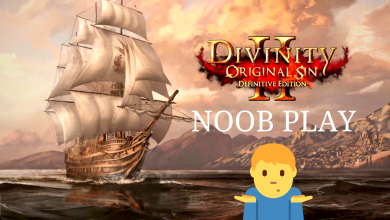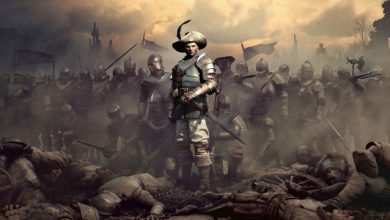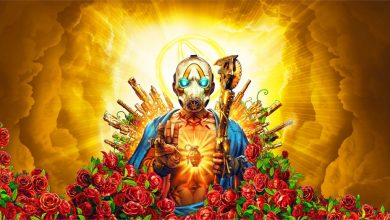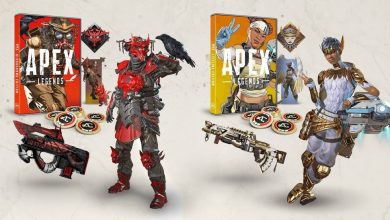I need to mention the endgame separately. Yes, it’s that brilliant. Without giving too many spoilers away, you will be satisfied that the game played out as per the choices you’ve made. You will make many choices and will cajole and manipulate people for your ultimate aim. All these actions lead up to a final battle which is unlike anything you’ve seen in an RPG. There are games from the RPG and adventure genre where the final moments have been less than sublime or satisfying because of a weak boss (Saren anyone?) or a hurried end or a combination of both. Dragon Age is a game which picks up on the tempo gradually and finishes with a resounding clash.
[singlepic id=1668 w=450 float=center]
The controls on the console version are an interesting port of an RPG. Traditional RPGs have been hard to port onto consoles because there are so many spells and abilities and multiple party members to control, and while there have been some interesting concepts in the past, Bioware has come up with a simple and easy interface to play on the consoles. The LT/L2 button brings up a contextual radial menu for the controlled character which shows all actions, inventory, and target selection. The RB-LB/R1-L1 buttons control character selection on the fly. Three face buttons have abilities mapped to them, and an additional three abilities can be assigned by using the RT/R2 button. The direction pad allows quick selection between enemies.
It does not take time to get used to this gameplay mechanic – the game pauses automatically when the menu comes up. This is a far cry from the point and click control of the PC version, but it still makes the game highly accessible. The absence of an isometric view in the console versions makes micromanagement tough, and you will instead rely more on real time tactics. You can apply tactics to your party members to help you through the large battles. This is similar to the gambit mechanism from Final Fantasy XII. Tactics are great and offer a great deal of customisation and are invaluable if you want to play the game on anything higher than Easy. This is because the game is not a cakewalk – it will make you cry in places and can get frustrating because of some crazy difficulty spikes. A peaceful walk through the dungeons becomes a nightmare at the end because of a tough group of fanatics.
[singlepic id=1669 w=450 float=center]
The spells, abilities and skills available will seem familiar to anyone who has played RPGs. Each class has multiple trees of abilities it can specialise in, or you can try to be a jack of all trades, although this is not recommended. There is a good mix of direct damage, ranged, area of effect and healing abilities for each character and with judicious party composition and skill point spending, your party will soon become a death dealing army. Each character can also get class specific specialisations, which offer specific bonuses and abilities. A bonus would have been statistics on damage for the spells but suffice to know that higher levels will deal higher damage. The journal is a useful tool with a ton of information – each action, note and enemy met in the game is explained in detail with accompanying lore. The codex fill in the backstory of Ferelden and its inhabitants and the amount of information available will fill up a small book.
The art style in the game is reminiscent of Neverwinter Nights 2 – and unfortunately, the graphics seem to be from that age as well. The game world has been designed well, especially the interiors, and a trip through the dwarven kingdom of Orzammar or a deserted Elvish ruin is breathtaking. The endgame setting is suitably grand. After all, this is the culmination of your story. However, exteriors are bland and often without scenery. Character models and armour are well detailed and effects on the characters are visible. The spell effects are excellent and some of the high level spells look devastating.
[singlepic id=1670 w=450 float=center]
The PC version looks far better than the console versions, benefiting from the higher resolution textures. Amongst the consoles, the game does have a sharper resolution on the PS3. but the Xbox 360 version makes up with better framerates. Even in the heat of battle with 20 characters on screen and spells flying about willy nilly, the framerate did not drop once on the 360. The music and sound effects complement the game perfectly – it doesn’t jar with gameplay and sets the mood of the situation. The Collector’s Edition of the game comes with the entire soundtrack on the bonus disc and you will want to listen to it again and again.
One single playthrough of the game will take anything from 50 to 80 hours depending on your appetite for sidequests and exploration. The sidequests contain the usual mix of fetch and rescue missions given by various guilds and characters throughout the game. Some of them can even be triggered by exploration and are worth completing for the loot available. The replayability of Dragon Age: Origins is amazing and you will want to play through at least the different origin stories for a new twist to the age old induction level in RPGs. RPG lovers will play through the game multiple times because of the large number of paths available, and even new RPG players will want to give the Mage a whirl after they are comfortable with the Warrior class.
Next page: Console vs PC comparison and IVG Verdict



